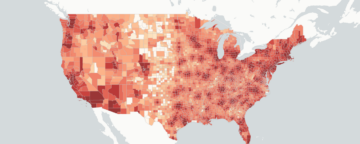A team of researchers led by Children’s Hospital of Philadelphia and the Annenberg Public Policy Center found that new drivers licensed before age 18 who are subject to mandatory driver education that includes behind-the-wheel training, in addition to Graduated Driver Licensing (GDL) restrictions, were less likely to crash than drivers licensed at age 18 who are exempt from these requirements.
These findings were published online today by the journal JAMA Network Open and suggest that comprehensive requirements for licensing can keep novice drivers safe. The research was conducted by the Center for Injury Research and Prevention (CIRP) at Children’s Hospital of Philadelphia (CHOP), the Annenberg Public Policy Center (APPC) of the University of Pennsylvania, and the University of Michigan.
For decades, researchers have debated the effectiveness of behind-the-wheel training and whether it reduces young driver crashes as intended. To date, only 15 states have comprehensive licensing requirements that include behind-the-wheel training at a licensed driving school, in addition to other methods like classroom or online instruction, parent-supervised practice driving, and learner permit holding periods. In states with GDL restrictions but no professional behind-the-wheel training requirements, the youngest novice drivers have the highest crash rates.

To determine the potential benefit of behind-the-wheel training, researchers focused on the state of Ohio – a state that requires this training in addition to GDL for drivers licensed before age 18, but not for drivers 18 and older – and used data to determine whether drivers licensed before age 18 were better prepared and less likely to crash than older newly licensed drivers exempt from these requirements.
In this prospective, population-based study, the researchers utilized Ohio licensing data from 2018. They were able to compare data from 136,643 license applicants between the ages of 16 and 24 with tracked licensed driver crash outcome data from up to one year after licensure for 129,897 of those drivers.
The study found that drivers who were licensed at age 18, making them exempt from comprehensive licensing requirements, had the highest crash rates in the first year of licensure of all those licensed under the age of 25. Compared with drivers licensed at age 18, those licensed at age 16 had 27% lower crash rates over the first two months of licensure and 14% lower crash rates over the first 12 months of licensure. Compared with drivers licensed at 18, those licensed at age 17 had 19% lower crash rates over the first 2 months of licensure and 6% lower crash rates over the first 12 months of licensure. In addition, 16-year-old license applicants performed best of all those licensed under age 25 on the on-road license examination, with a 22% failure rate compared with a 37% failure rate at age 18.
“Unlike conventional thinking, this study shows that we should not assume that the youngest new drivers will have the highest crash rates,” said the study’s lead author Elizabeth Walshe, Ph.D., a research scientist at CIRP at CHOP and a former postdoctoral fellow at APPC. “With comprehensive licensing requirements, these younger drivers can perform better than older novice drivers who are exempt from these requirements. All novice drivers need the proper training that leads to developing the critical driving skills needed to avoid crashes.”
In addition, when the study controlled for other factors, the researchers found that for every month in the learner permit stage of licensure, there was a 2% reduction in crash rates. When accounting for socio-education status (SES), those in the lowest 10th percentile SES neighborhoods had statistically significantly higher crash rates than those living in the highest 10th percentile SES neighborhoods and were more likely to fail their first on-road driving exam, suggesting the importance of making comprehensive training more affordable.
“Our findings in Ohio, along with other recent studies, suggest a need to re-examine licensing requirements to ensure that drivers are prepared to drive safely,” said Flaura Winston, M.D., Ph.D., a co-author of the study, co-scientific director of CIRP at CHOP, and an APPC distinguished research fellow. “Currently, only 15 states mandate behind-the-wheel training, and in those states that do, the cost can be prohibitive. We need to consider making this training available and affordable for all.”
In addition to Walshe and Winston, co-authors on the study are APPC research director Dan Romer, Ph.D.; Abraham J. Wyner, Ph.D., and Robert Zhang, B.A., of the University of Pennsylvania; Shukai Cheng, M.S., Alexander K. Gonzalez, M.S., and Natalie Oppenheimer, M.S., of CHOP; and Michael R. Elliott, Ph.D., of the University of Michigan.
In addition to APPC, this study was supported by the Eunice Kennedy Shriver Institute of Child Health and Human Development of the National Institutes of Health (NIH) under grant 1R21HD099635-01; the U.S. National Highway Traffic Safety Administration through the Ohio Traffic Safety Office (NHTSA); the State of Ohio’s Department of Administrative Services, managed by the Ohio Bureau of Motor Vehicles; the Distinguished Chair in the Department of Pediatrics at Children’s Hospital of Philadelphia; and NJM Insurance Group.
Walshe et al., “License Examination and Crash Outcomes Post-Licensure in Young Drivers: Do the Youngest Drivers Crash the Most?” JAMA Network Open. Online April 25, 2022. DOI: 10.1001/jamanetworkopen.2022.8780.
Read Elizabeth Walshe’s blog post on this research at CIRP: Comprehensive Licensing Policies Linked to Safer Novice Drivers
Read the related commentary in JAMA Network Open: “Do the Youngest Drivers Crash the Most?”
Read the original news release at CHOP.

